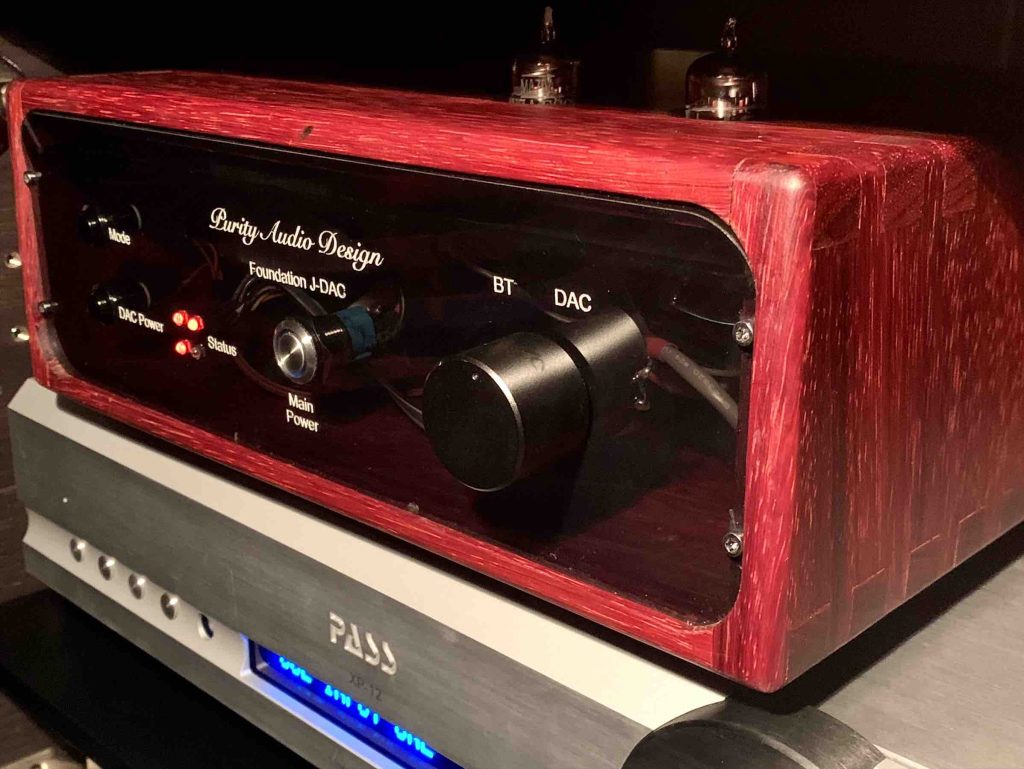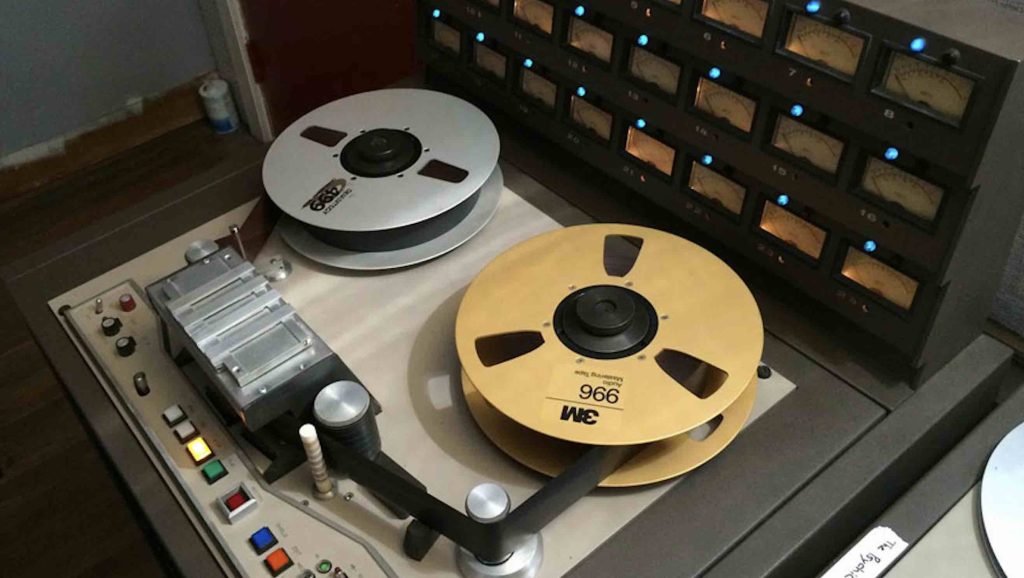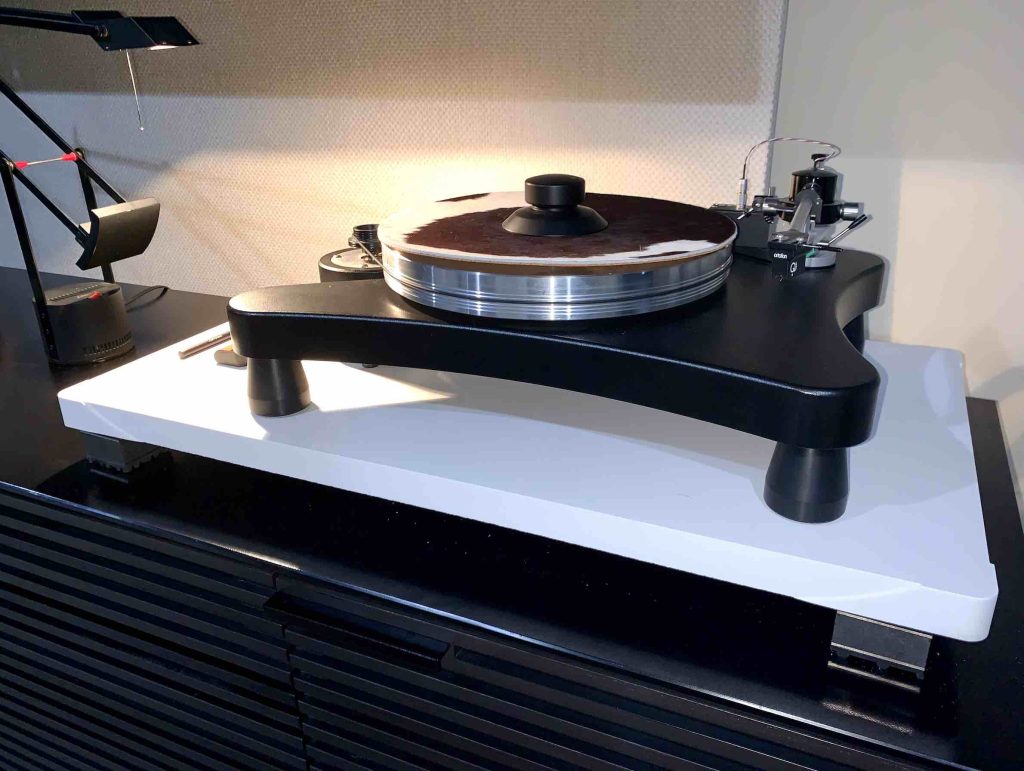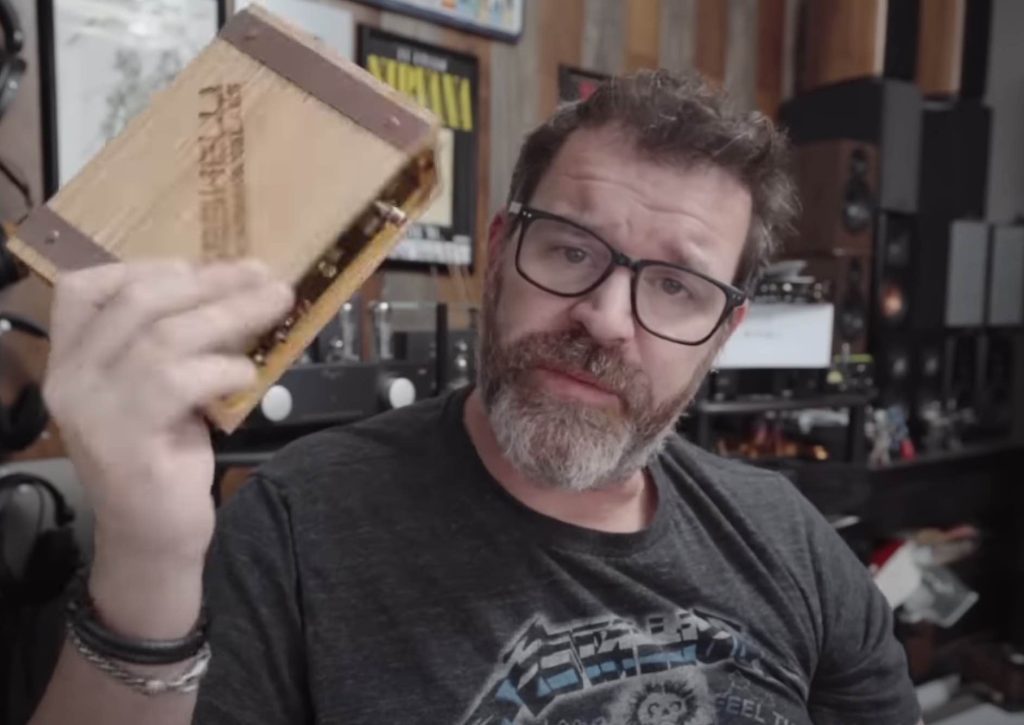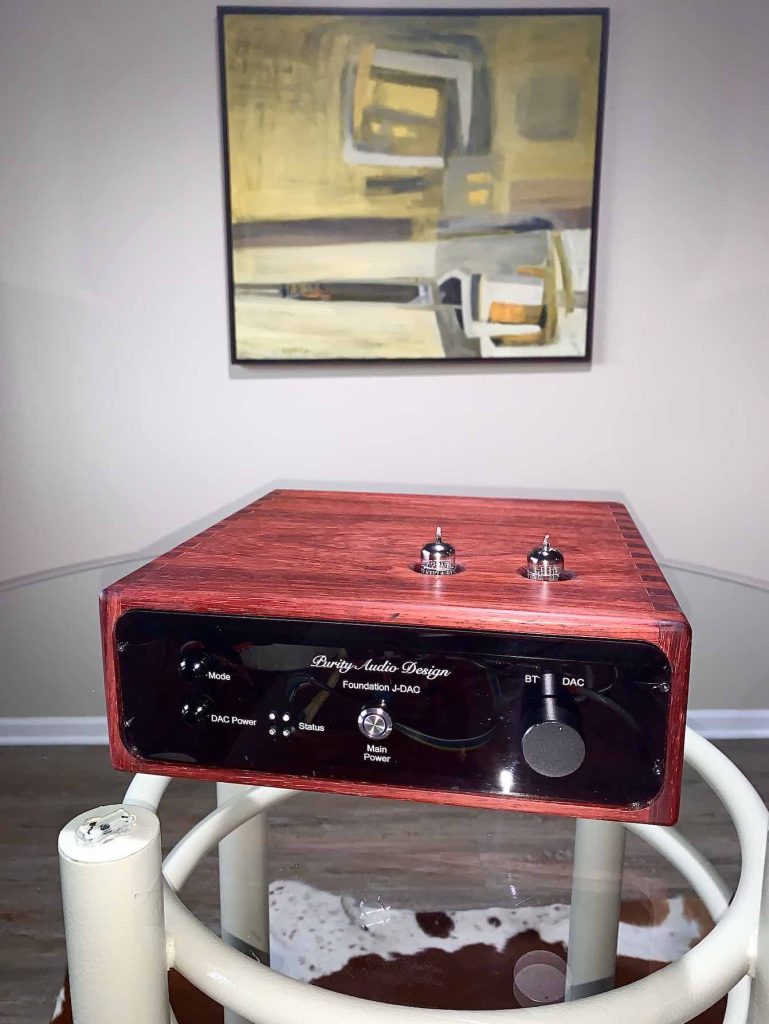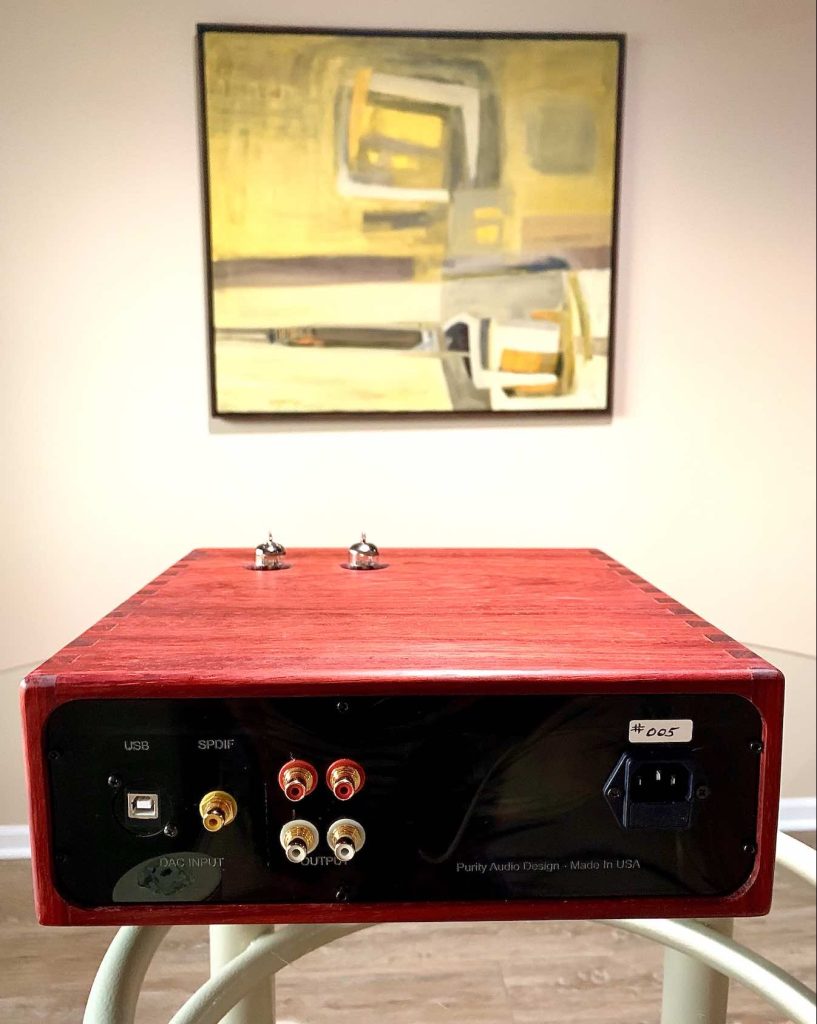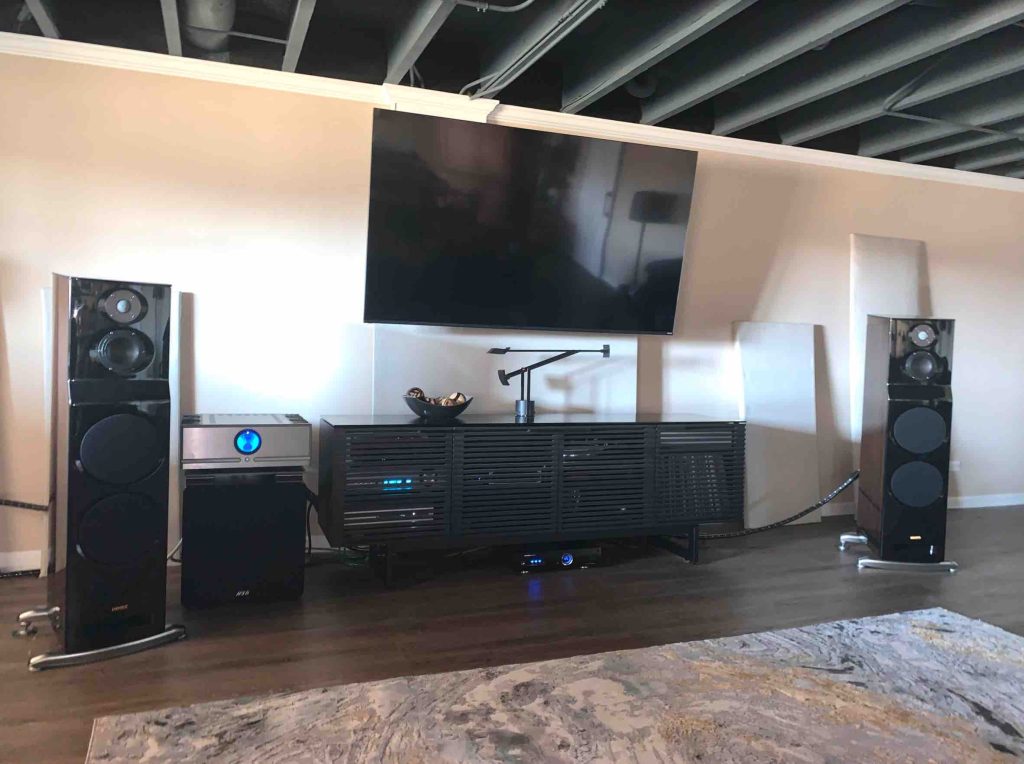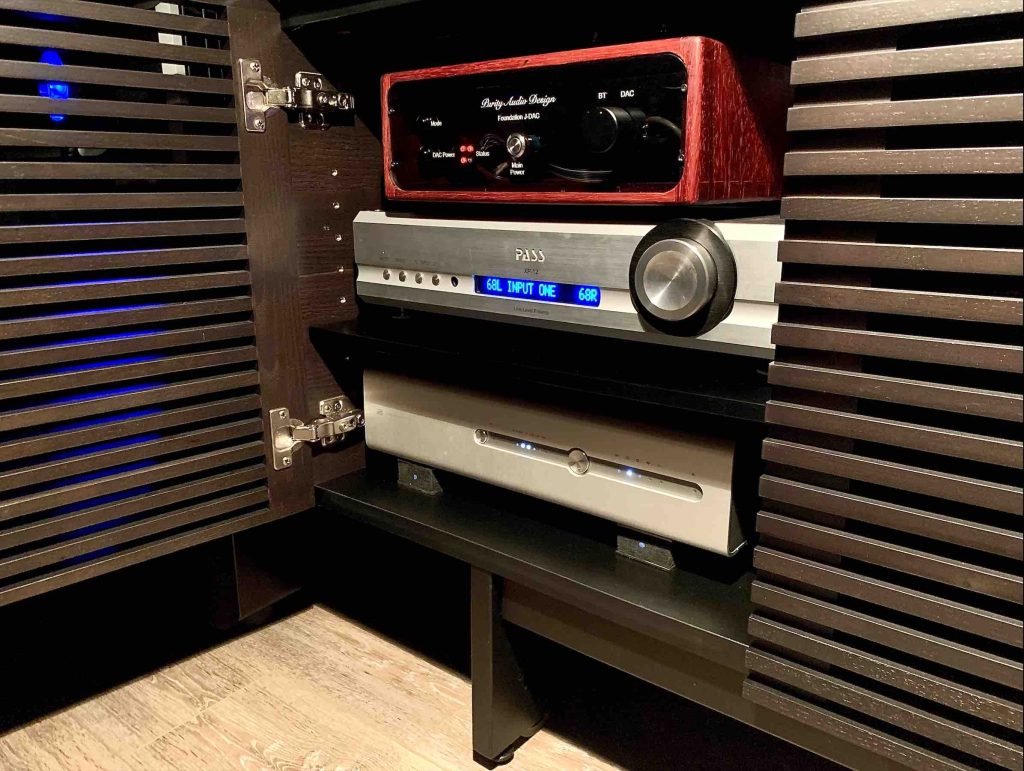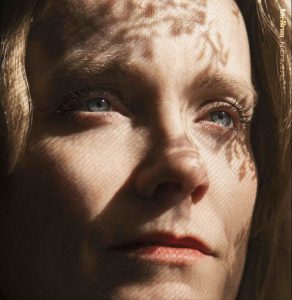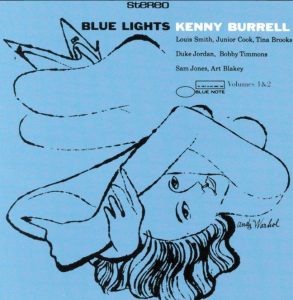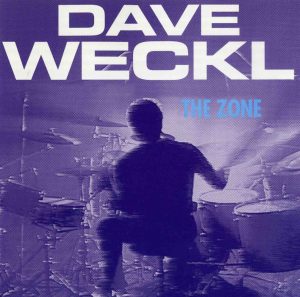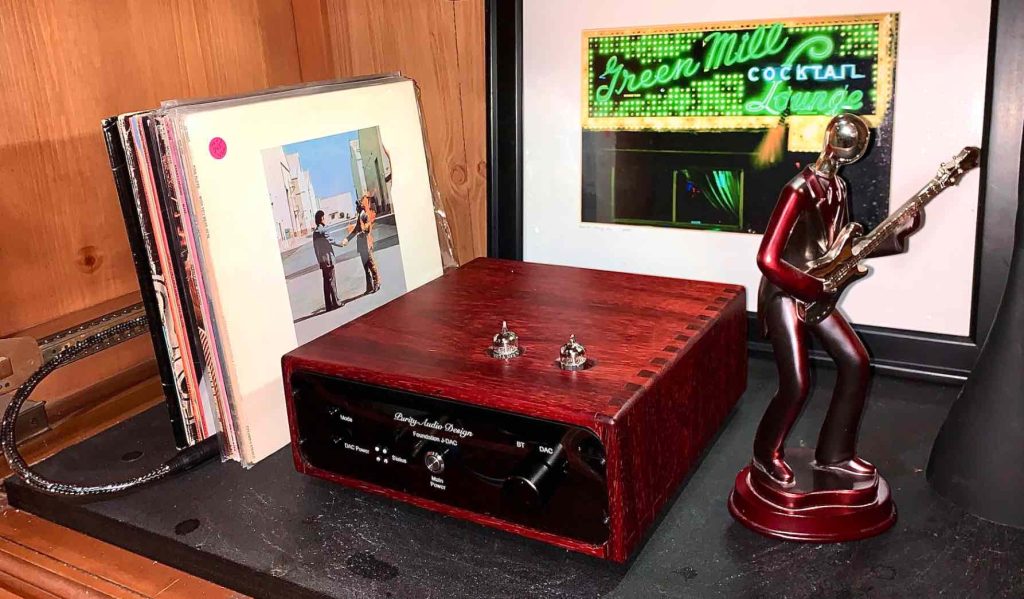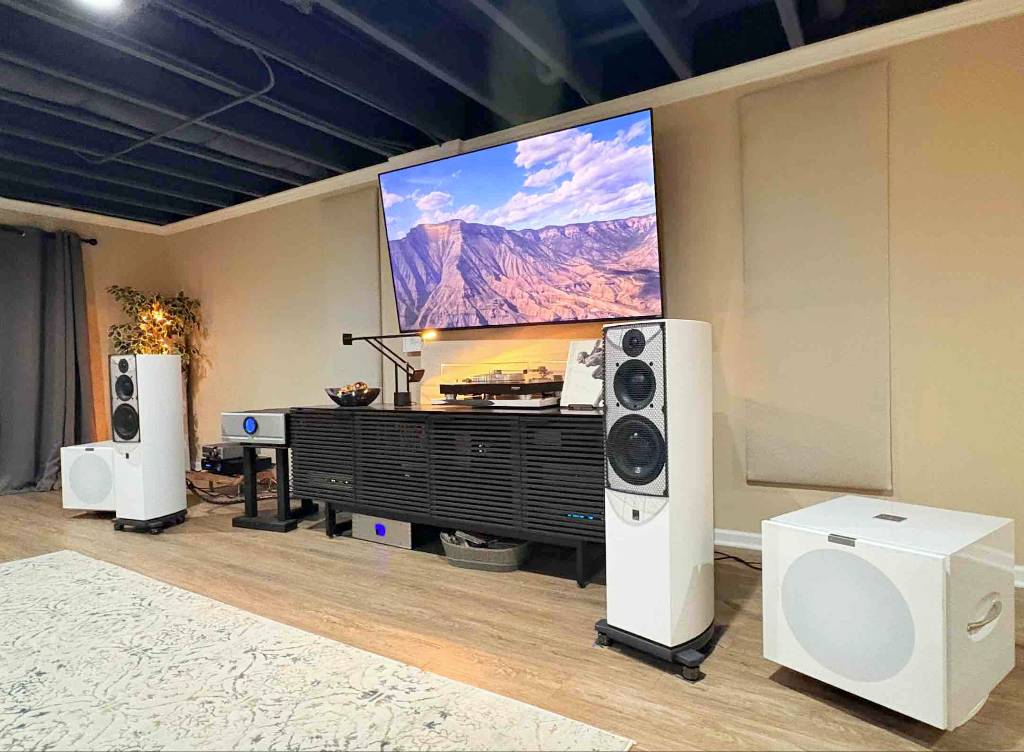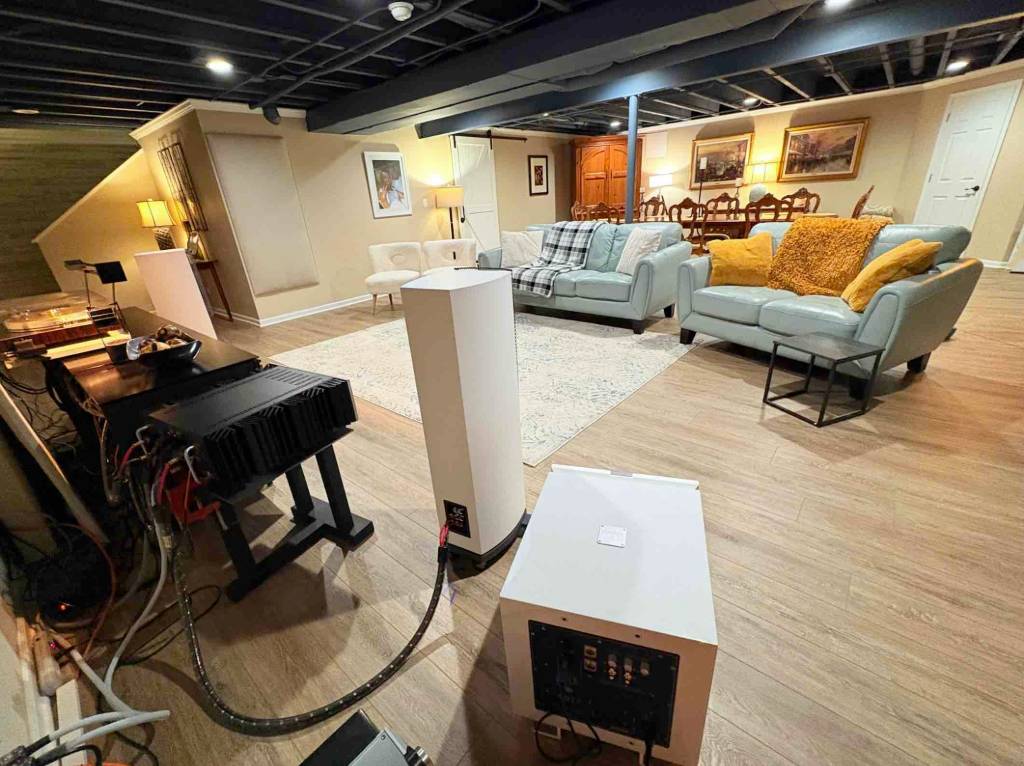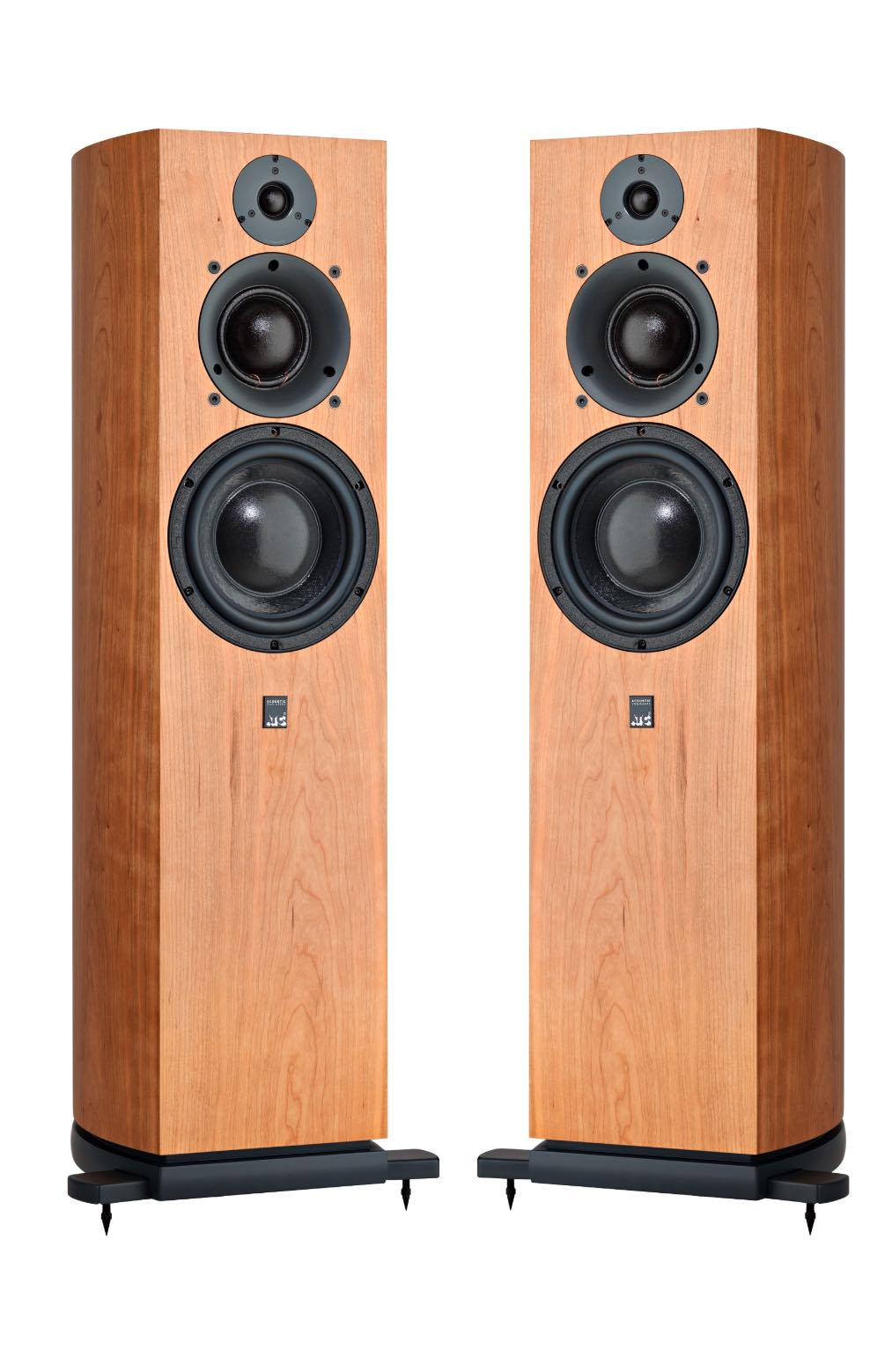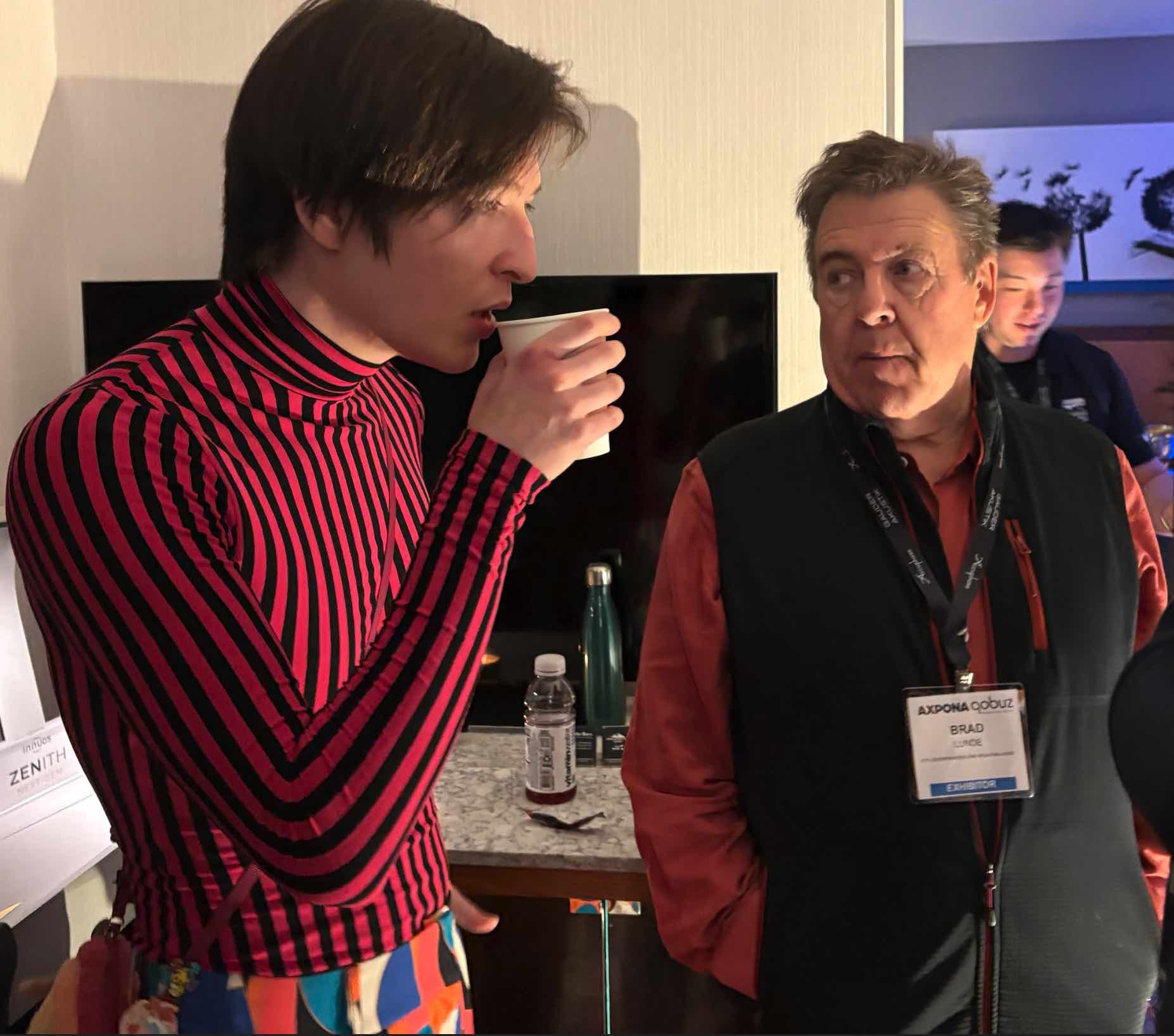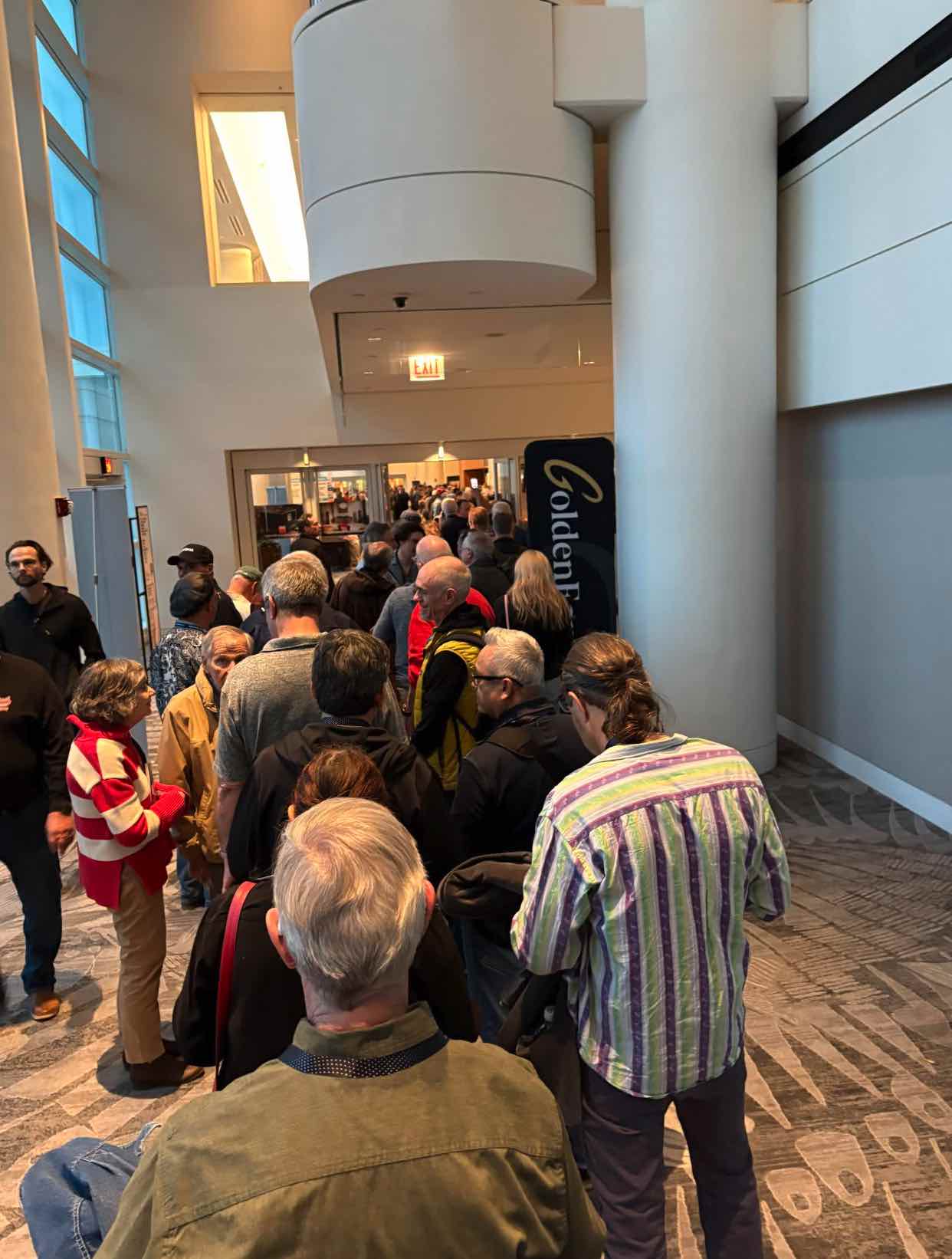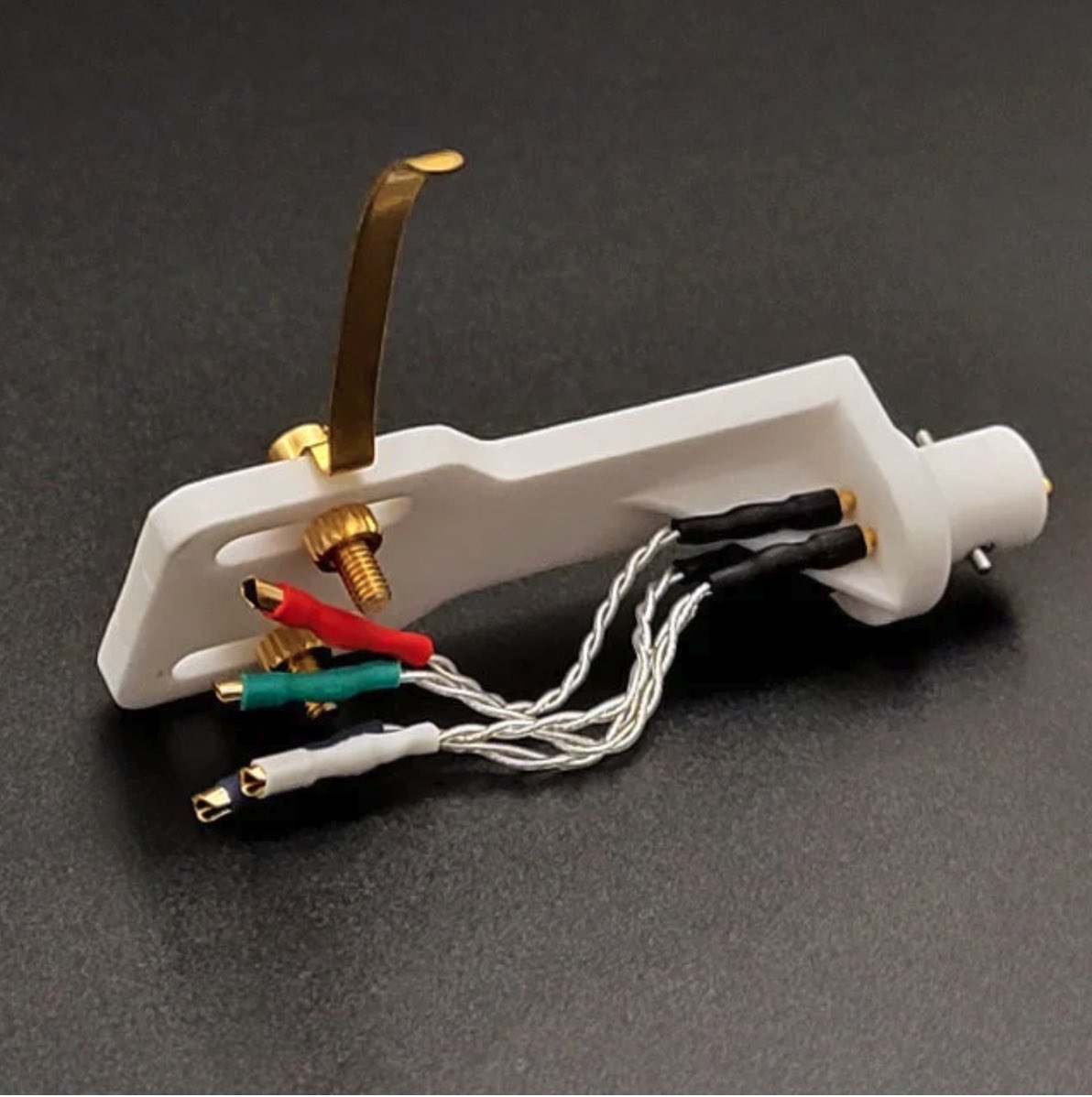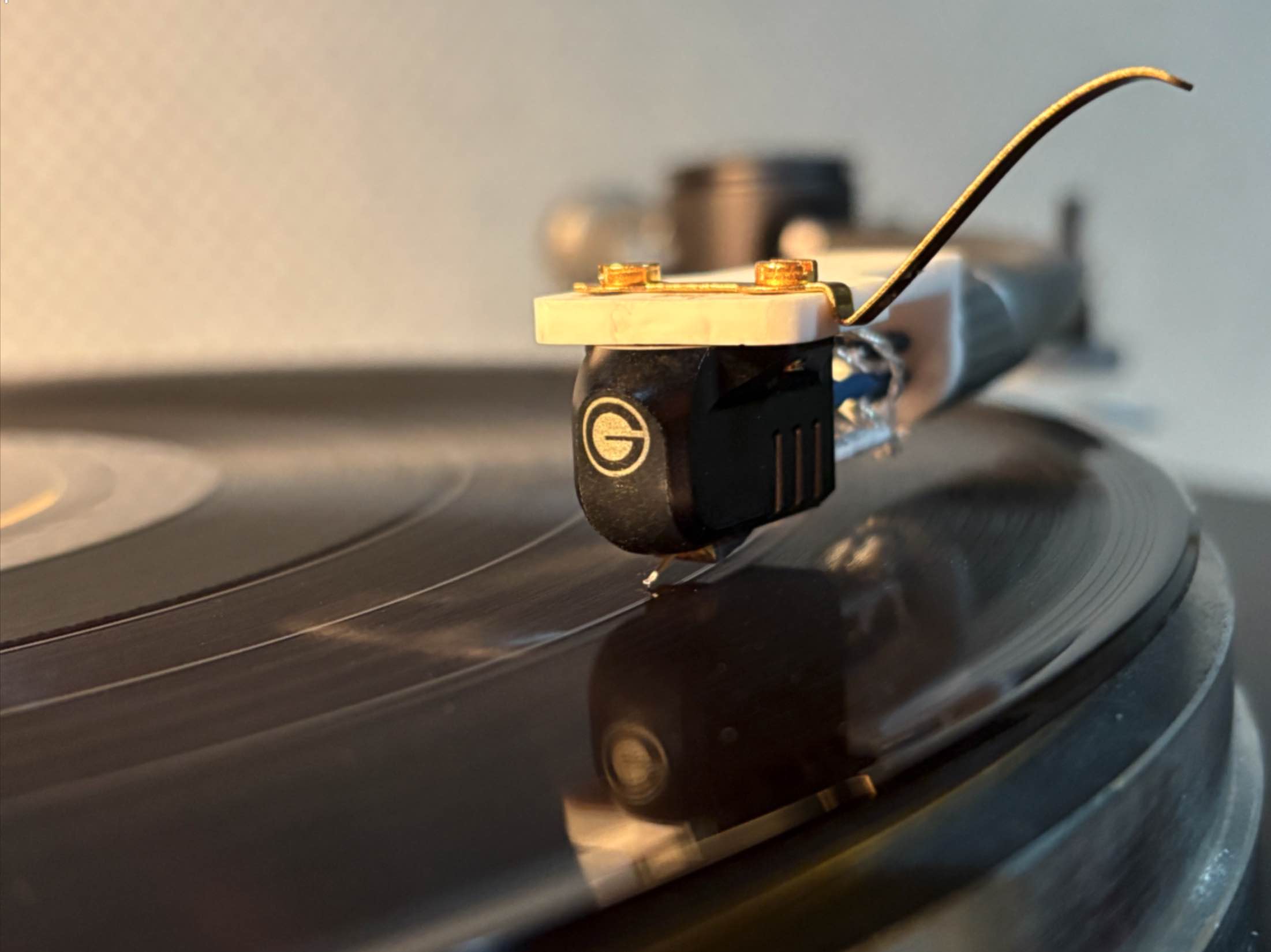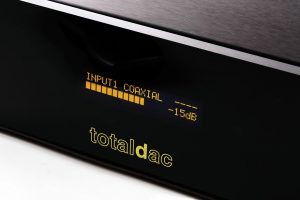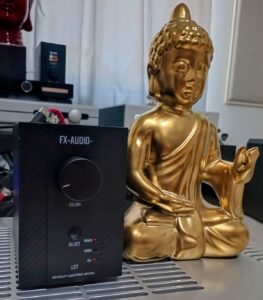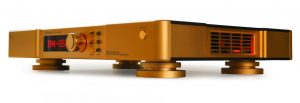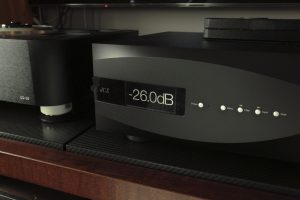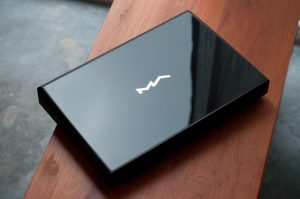Dialing in this DAC conjures an enchanted eye exam—however, instead of an optometrist switching lenses in a phoropter and asking, "Better or worse?", you swap 12AU7 tubes and focus on how they affect your music experience. As with eyeglasses, the optimal fit varies with each individual. It depends on a variety of factors—the room's acoustics, speakers, equipment in the chain, cabling, and personal tastes. For some, it's simply a matter of sonic transparency: just deliver the recording with high fidelity and nothing more. Nowadays with advancements in hardware and Digital to Analog Converter chips, that can be achieved at relatively low cost. Yet, for many of us, this can be either fatiguing or bland, and like prepping for a hot date—a dab of gel, a spritz of cologne, spruced up shirt, fresh pants and shoes—a little dressing up is desirable to maximize the magic, and that's where the Purity Audio Design Foundation J-DAC really shines!
For the unaware, the Foundation J-DAC is a vacuum tube DAC in a 12" x 12" x 5.5" hardwood enclosure that retails directly from Purity Audio for $1999.
When it first arrived, the J-DAC sported a pair of Telefunken 12AU7 valves in its tube output buffer that rendered music with a more classical warm and lush "analog sound" that one associates with vintage vacuum tubes. As such, differentiating its aural presentation from that of my reference, the solid-state Schiit Audio Yggdrasil Analog 2 DAC (you can read my review of it HERE), was pretty easy in A/B comparisons. The J-DAC conjured a listening session with Supertramp's Paris Live at the Pavillon de Paris/1979 on a VG Plus vinyl LP during my review of the Pass Labs XP-17 phono stage this past November. "The cheers and chants of an enthused Parisian crowd, the detail and dynamic contrast of the Rick Davies' organ, Roger Hodgson's exploding guitar riffs, hammering keys, and Davies and Hodgson's vocal harmonizing…(were) vivid and visceral," I wrote (you can read that HERE). However, as I wrapped up my review notes, I played the same album digitally on Qobuz through my Yggdrasil, and I was especially taken by the extra bit of micro detail that I just didn’t hear on the 33 1/3 RPM (Revolutions Per Minute) record.
Well, that was easy, I thought. The J-DAC sounds a lot like vinyl, and if you love that sound, then this is the DAC for you! I'll just run some close A/B comparisons with the Yggie, write it up, and presto! That's a wrap.
Not so fast. Would the J-DAC sound different with other tubes and, if so, how? And before we go any further, it bears asking, who is Pure Audio Design, and what exactly is the analog sound anyways?
Joe Jurzec
Enter Purity Audio Design
Purity Audio is a joint venture between Joe Jurzec's JAM'n Audio and Response Audio's Bill Baker since 2007 that does some OEM (Original Equipment Manufacturing of a product that's resold or rebranded by another), in-house designs, and some pieces in partnerships with other companies (you can view their website HERE).
Bill Baker
"Bill and I hit it off and we decided that we could do some designing together. He's the engineer-designer who designs the circuit, and I'm operations and voicing (listening to an amp, for example, and deciding to change its sound)," Jurzec says. "Actually, we both voice, but we just work together to figure what we're going to do. It's a great partnership."
"The Foundation Series is our latest and most affordable series providing exceptional value," Baker wrote on a blog post. "All Foundation product will be built into custom hardwood enclosures custom made for Purity Audio Design by Geshelli Labs." (audionervosa.com)
Jurzec, 64, works full time as a software consultant specializing in Computer Maintenance Management system applications, while Baker, 53, works full time as an audio designer and engineer designing and building equipment for his company, Response Audio NY, as well as Purity Audio Design and their OEM partners.
"We've designed for several other companies, some of them you might find on our website," Jurzec says. "We've done preamps, and amplifiers, buffers, and now a DAC in partnership with Geshelli. Look for us to come out with a hybrid GaN FET Class D amp later in 2023."
Photo courtesy of reverb.com
The Additive Effect of Analog Recording
Shane Berry is an accomplished SAE certified audio engineer, consultant, remixer and recording artist who’s produced audio content for multinational firms such as Red Bull, Supercell, Heineken, and recording labels such as Trapez, Ministry of Sound, and Kompakt, and in a recent article, I referenced his brilliant deconstruction of analog's charm:
By the nature of analog recording, certain artifacts are introduced during the audio capturing process (such as distortion) that add frequencies that just so happen to fall into the audio spectrum that we (in the West at least) find pleasing; i.e., odd harmonics in tape saturation (creating chords) and even harmonics in tube saturation stacking into octaves—in other words musical in nature… it is these anomalies that are associated with analog sound and give it its characteristic warmth and naturalness-ness. Thus the most often cited "drawback" of digital recording is the lack of these phenomena entirely (no warmth = cold) and the introduction of another kind of distortion that is inherently displeasing to the human ear, non musical, low level distortion as a result of quantization error and aliasing—but, as mentioned above, with high quality digital gear, these artifacts are rendered irrelevant to all but the most stubborn or sensitive ears. (https://macprovideo.com )
That quote had been kicking around in my head for several days as I related it to experiences with tubes, digital and solid state in my signal chain. Then, while admiring southeastern Wisconsin's snow covered trees and pastures during a commuting cell phone chat with Straight Wire’s Steven Hill in Hollywood, Florida, it came up.
"What's the temperature? Is it below zero?" Hill asks. "Are you and Belle planning a trip to visit your mother in law in Florida right about now?" As we catch up, I share Berry’s thoughts on the audible effects of analog media, and compare that to the tube output stage delivery of the J-DAC that's in for review. Between running his business, caring for his aging parents, workouts, playing billiards, and spending time with his wife, Goldie, Hill maintains a hectic schedule, but he listens to his Oracle Delphi Mk 4 turntable that he stores at a friend's HiFi store when he has time (it's equipped, he says, "with an SME arm and Lyra/Grado cartridges"). A lover of good analog recordings, he concurs on the similarity of tubes and analog sources on how they affect the presentation of music. "Yes, it certainly fills in the sound with its added harmonics," he offers. He's absolutely right.
Jeremy Clarkson throttles the engine on his show, Top Gear (photo courtesy of TopGear.com YouTube Channel). Taking a Spin with Sporty Mazdas.
About a month before this review began, I chatted with Jurzec about my vinyl listening these days. I enjoy it now and again, but often there are gaps of one, two, three—or even six months—between vinyl sessions. And when I indulge, there's the hassle of retrieval and setup of the turntable, motor, and 44lb. isolation platform that are tucked away to accommodate our minimalist décor. Sure, the rituals of extracting an LP from its sleeve, clamping and wiping it down, lowering the stylus, and leafing through liner notes can be soothing and nostalgic, but it's also a bit inconvenient when compared to digital, where with a few pushed buttons, I get my music endorphins fix.
"Belle sometimes tells me I should sell the turntable because I never use it," I say. But that's not entirely true; there are times that really I enjoy spinning LPs. The ritual and warm sound evoke a sense of comfort and nostalgia like fine cigars on holiday. I am reminded of English TV show host and sports car journalist, Jeremy Clarkson, sparing his very costly heifer, Pepper, from slaughter after she's found infertile, only to keep her as his pet in Clarkson's Farm (where with zero experience, he struggles running a farm despite horrid weather, low yields, and other adversities). Bottom line, I still like my VPI Prime Scout turntable.
"What if you replaced the turntable with a DAC that sounded like vinyl, instead?" Jurzec asks.
It was an interesting proposition, one that led to this review, but when he sensed that I wasn't all that into the more classic analog sound, Jurzec decided to mix things up a bit.
A week later, he delivers additional pairs of different branded tubes and compares the J-DAC's delivery to the Yggdrasil on a handful of pop, jazz, and blues cuts. Very nice, analog sweetness with a little more detail, I note, bobbing my head after he slips in a pair of Gold Lion 12AU7s. A little less tube glow and a little more texture and detail—I like! Then, Jurzec inserts a pair of 1961 and 1962 EEC82 12AU7 Mazda France tubes (yes, the same Mazda that makes rotary engines and sporty roadsters). Whoa! Ain't that the Schitts? No, it's a Mazda! Swapping back and forth to the John Mayer Trio's live performance of "I Got a Woman," for example, the J-DAC has additional traces of warmth compared to the Yggie, yet its detailed delivery is eerily similar with the growl of Mayer's guitar, Pino Palladino's low bass riffs, and thwack of Steve Jordan's snare. Ditto for Mayer's vocals! Frankly, this sounds much, much closer to what I am used to hearing in my A/V room.
Jurzec laughs. "It sounds like an entirely different DAC, doesn't it?", he quips, adding that the Mazda tube wouldn't normally be one he'd use, but for my room, speakers, associated equipment and tastes, it makes complete sense. I am dumbfounded and impressed.
Later, after Belle joins me for dinnertime listening, she agrees that the J-DAC has a smidgen more warmth, but the differences are much harder to detect than before. This should be a very interesting review after all.
Photo courtesy of Beelows.com
Not Your Average Bones
Picture a prime slab of steak. Pound in coarse sea salt with a tenderizing mallet, add pepper and minced garlic, drizzle with olive oil, and sear both sides on high for several minutes, and you've got an incredible savory experience. For many, this minimalist approach is king. However, for others, elevating your experience to the sublime involves slathering and sautéing the beef with superbly nuanced red wine mushroom sauce by an experienced, culinary-schooled chef like my brother, Luis. Both are outstanding!
Randall Messman (AKA "Cheap Audio Man") with his '2022 DAC of the Year', the Geshelli Labs JNOG [J2] DAC (still image from cheapaudioman channel on YouTube)
At the core of their Foundation J-DAC is the Geshelli LABS JNOG2 [J2] DAC with an ES9038Q2M DAC chip and an Amanero USB module that, starting at $249.99, has impressed many, including the popular YouTube reviewer, "Cheap Audio Man" Randall Messman, who gave it his "2022 DAC of the Year" award (that's a prime example of sonic transparency at relatively low cost).
Image courtesy of thefeedfeed.com
"It's such a clean circuit that it allows the flavor of the tube to come through," Jurzec says. "The tube circuit with the DAC is like a cut of prime beef; you add the right sauces and seasoning that just enhance and make it better." The Geshelli DAC is excellent on its own merit, no doubt, but by adding the Purity Audio Design tube buffer, they pack some flavorful beef on the Geshelli's bones, resulting in a synergy that's quite special."
"This DAC would not be possible without the great partnership and team at Geshelli Labs. Geno and staff are truly a great group to collaborate with and the relationship is more like working with family than business partners," Jurzec continues. "We hope we’ve done justice to what is already a phenomenal DAC on its own merit!"
Jurzec recently lent a Purity Audio Design J-DAC to a reviewer in Milwaukee, who ran it in his system. Comparing it with his $14,000 Playback Designs MPD5 DAC, he was astonished. "I'm not going to say it's better, but I'm not going to say it's worse," he reported. The secret is in their buffer's sauce.
"If you want warmth, you might use something like a Mullard," Jurzec says. "If you want more analytical, you put in a Mazda. And if you want something in between, you put in a Telefunken or a Gold Lion. Every tube you put in, because of the Geshelli's clean circuit, you hear the uniqueness of that tube. And every one sounds different."
"The next step is to take his MPD5 DAC with our buffer," Jurzec adds, having recently dropped one off for review. The Foundation Buffer (which is included in the Purity Audio Design J-DAC) was designed to mate with quality solid state source components and DACs, and if it can sound so great with a $2000 overachieving DAC, imagine what it can do with a $14,000 Playback Designs piece, where cost isn't a constraint? That's an intriguing thought, but one reserved for another day.
Oil painting by Al Wynne.
Build
The 12" x 12" x 5" hardwood enclosed J-DAC has a black, translucent plexiglass face with, from left to right:
- A "Mode" button with a DAC Power button below it
- A bank of four lights marked "Status" that all light up when it has power but isn't connected properly to a digital signal (with proper digital signal, the bottom right light turns off)
- A Main Power button at center below the Logo, "Purity Audio Design Foundation J-DAC
- A selector knob marked BT and DAC for Bluetooth 5.0 playback or in line DAC, respectively
On the rear panel, from left to right is a USB input, SPDIF input, left and right channel single ended RCA cable outputs, and an IEC power plug receptacle.
Up top, the 12AU7 tubes protrude roughly a half inch from the surface, and removing them f0r tube rolling (swapping tubes for various effects) is a bit cumbersome, and this challenge is exacerbated because I have the J-DAC seated atop my Pass Labs XP-12 preamplifier inside my BDI Corridor media console with only a handful of inches clearance above. Sigh. The things we do for the love of this hobby! (Author's note: you can see my affiliated equipment by clicking on my name in the byline at the top of this review.)
"The streamer on this one does not go through the Geshelli DAC board," Jurzec says in regards to the Bluetooth 5.0 playback option. "It uses its own internal DAC. The upscale unit coming later will route through the Geshelli board."
You'll have to forgive me, but I'm really not into Bluetooth listening, so I never tested the capabilities of this playback feature of the J-DAC.
Specifications
The DAC
- ES9038Q2M DAC Chip
- TI DIX9211 SPDIF DIR Chip
- Single TI1656/TI1612 OPAMP for Unbalanced Output Circuit
- Ultra Low Noise Power Supplies. Main power supply by Purity Audio Design
- Amanero USB Standard
- USB 2.0 High Speed Interface
- Plug and Play LINUX,MACOS,WIN10
- 32Bit PCM (44.1Khz to 384Khz)
- DSD64 – DSD512 Compatible
- Optional Windows Driver Available (Needed for High Speed DSD Interface)
SPDIF Interface
- 24bit SPDIF PCM Interface up to 216Khz
- 4 Independently Selectable Ports Available 1xTOSLINK, 1xCOAX) Rear mounted
Outputs
- Stereo RCA (Unbalanced) Outputs
- THD+N < .000300%
- SINAD < 111dB
- SNR < 121dB
Tube Stage
- Output Impedance: 100 ohms
- Gain: 1dB
- Tubes: 2x 12AU7/ECC82
- Dimensions: 12"x 12" x 5.5" (with feet and tubes)
Futzing and Listening
I keep the J-DAC in my system for about a month, streaming and playing digital files from my Intel NUC music server retrofitted with Roon Lab's ROCK (Roon Optimized Core Kit), a premium music playback software that organizes all my digital music files. Funny, with it in play, my inclination to schlep out the vinyl is less, and in between binge watching serials like Clarkson's Farm seasons one and two with Belle, I come to appreciate the merits and pleasures of listening with tubes in the DAC's output stage. In a way, I am reminded of my days that I had with the Lampizator Big 7 DAC in my signal chain some years ago. Of course, there are differences most notably—a more sonorous sound signature of the Lampi with its 398 power tubes and not 12Au7s in the output stage—but that was in a different room, and with auditory memory being sketchy at best, I cannot comment more other than to suggest that there's definitely something to be said for the warmth and euphoria of tube caressed music playback.
I find that I really like the detailed presentation with just a small dollop of warmth afforded by the Mazda 12AU7 tubes. As mentioned earlier, the sound signature sounds surprisingly close to my Schiit Audio Yggdrasil DAC, and I get a kick out of playing music through one for a stretch, and then the other. As the reader will see, I hear on some minor differences, but they're subtle. Now when comparing the J-DAC with my Yggdrasil, I use the RTA (Real Time Analyzer) app on my iPhone to compare passages and adjust for volume differences between the two DACs (the Yggdrasil is linked to my system via balanced Straight Wire Virtuoso R2 XLR cables, whereas the J-DAC is connected with Straight Wire Virtuoso R2 unbalanced RCA cables.
Regardless, it's time to get down to the business at hand and, so, without further ado, I give you the official listening test.
Listening Session
Ane Brun’s vocals—clear, understated and tender—are delicate but girded with a strength and versatility forged in her battles with Lupus, an autoimmune disease where the immune system attacks and destroys the body’s cells, imbuing her melodies with a haunting resonance that's lucid and strong (Henrard, Pascal. "Ane Brun, a Clear, Delicate Voice from the North". pacedescarts.com). And in her song, "Naemir" sung melancholic in her native Norwegian tongue, they're ethereal and elegant in their angst—a haunting mournful anthem, accompanied by acoustic piano (Ane Brun.Naemir. 48Hz, 24-bit QOBUZ FLAC. Balloon Ranger Recordings, 2022). An angelic apparition, her voice lives, breathes, and entreats as it floats between speakers. The transients and decay of the piano in arpeggio (and intermittent additional layered piano flourish gently panning left and right) anchors and broadens the soundstage 45 degrees to either side.
With both the J-DAC and Yggdrasil, Naemir is mesmerizing, moving, and well worth exploring if you haven't heard it before! Although with both, the piano's attack and decay of the sound similar, there seems to be a subtle rise in reverb with the J-DAC. Ditto for Brun’s vocals.
Overall, the J-DAC and Yggdrasil’s presentations are very similar in articulation, detail, and bloom through the midrange, but playing the song back and forth a handful more times, I hear a slightly harder edge to the bite of the piano’s attack and Brun’s voice as it rises during certain passages with the Yggdrasil.
It’s very subtle, but the J-DAC appears to feather those edges a bit while adding the slightest smidgen of warmth, conjuring an oil painting technique I used on canvases with faces or other subjects against their backdrops: while the paint on face and background was wet, I'd take a dry brush and feather the edges, slightly smudging and blending the pigments on either side of the boundary separating the two. Combined with some light glazes (thinned out, translucent layers of paint) after the initial layers dried, the result feels more organic. This effect should not be surprising. After all, while the Mazda tube brings out more detail to the J-DAC than other tubes, it's still a valve and thus imparts what they characteristically do (albeit at a lesser degree): color the presentation with additive tube-related harmonics.
The tone and textures of Kenny Burrell's electric guitar and Tina Brooks' tenor saxophone are clearly articulated as Duke Jordan, Art Blakey and Sam Jones hold down the rhythm section on piano, drums and bass, respectively, in the well recorded and swinging "Scotch Blues" (Kenny Burrell. Blue Lights (Volumes 1 & 2). Qobuz FLAC 44.1kHz, 16-bit. Blue Note Records, 1958). With the J-DAC, again, it's a touch more organic, yet detailed, while with the Yggdrasil, it sounds close, but there's ever-so-slightly more crispness to Jordan's ride cymbal, Burrell's riffs, Brooks' sax, and Louis Smith's trumpet solo. Although both DACs present their subjects three dimensionally, there's less feathering with the Yggie; it's almost as if someone turned an invisible treble tone knob a click or two to the right.
The rich, bright and penetrating tone of the C trumpet's solo pierces the silence and reverberates in the hall, beginning with three staccato succession of triplets, a pause, then another pass, unfolding, then climaxing to the the crash of cymbals as the loud, cacophonous flourish of the orchestra joins in Mahler's Symphony No. 5 (Holder Gudndottir, Cate Blanchett. "Mahler: Symphony No. 5 in C Sharp Minor/Pt. 1." Tar (Music from and Inspired by the Motion Picture). Qobuz FLAC 96kHz, 24-bit. Deutsche Gramophone (DG), 2022).
Both DACs release the magic with similar detail, weight, and texture, but the J-DAC does so in a white chef's jacket as it brushes on a subtle analog glaze (or is that a rub?), while the Yggdrasil performs sans jacket and glaze, with a little dirt under its fingernails, vivid and flavorful without the sauce.
David Weckl's blurred drumsticks and bass pedal pack plenty of polyrhythmic punch and slam, and in tandem with Steve Weingart's keys, Tom Kennedy's bass and Brandon Fields saxophone fills up the room with spicy, savory sensations in their fusion mix in "Amanecer" (Dave Weckl. The Zone. Qobuz FLAC 44.1kHz, 16-bit. Stretch Records, 2001). With the Yggdrasil, it's a vivid, crisp and punchy jam session, while the J-DAC acts as a pair of polarized sunglasses, reducing the glare of the bright instruments with its invisible filter. The result sounds more like two inch reel to reel tape than a 44.1kHz, 16-bit FLAC file.
Remember playing with two inch tall green plastic army men as a child? If you did, they were fun, but they all suffered the same flaw: small residual seam lines from their molds where their plastic resin was injected, detracting from the make believe experience. I always wanted to take a razor to those imperfections! The J-DAC does that with recordings, by and large buffing and feathering out the digital edges, whereas the solid state Yggdrasil—which resolves the music extremely well and naturally—does not have the quite the smoothing and enriching effects of tubes and hence retains a hint more of the recording medium's characteristics.
Bottom line, while both DACs excel at presenting lifelike presentations of the music, the J-DAC adds polish it with an infusion of vacuum tube harmonics. You determine the amount and type of glow and luster with your choice of tubes. You want more sauce? Take Jurzec's advice and try a Mullard. If you want it more straight up, drier and more detailed, use a Mazda, and if you want a compromise, a Telefunken or a Gold Lion should work wonders! The possibilities are endless!
Conclusions
There's a reason that vinyl and turntables are becoming more fashionable nowadays. And the rituals associated with them (i.e, removing a record from its sleeve, wiping it down, lowering the stylus and reading the oversized liner notes) that cause us to slow down our harried lives, there's something to be said about reintroducing the warmth and harmonics of analog mediums into our homes during this 21st Century digital age, where throughout our days, we are bombarded by music playback on earbuds, cell phones, computers, the workplace and outlet malls that is harsh and cold sounding. Our ears—our very souls—need a break!
Now if you don't want to spend your hard-earned cash on records, turntables or analog hardware, the Purity Audio Design J-DAC can deliver that analog sound with greater savings and convenience. You can use it to stream from your favorite streaming service (Qobuz, Tidal, Deezer, or Amazon Music, for example) or play digital files from your hard drive or CD transport and be able to experience that same glorious glow with millions of songs at your fingertips! And the J-DAC is a versatile performer; with an award winning, clean circuited D to A converter at its core, it employs an excellent tube buffer output stage that allows you to enhance your music listening experience to your tastes.
And for those who like Bluetooth playback from your cell phone or other devices, although I never tested it, that could be an attractive option if you, family, or friends want to stream something from a cell phone or other digital device. I can think of family—and extended family—that store scads of MP3 music files on their cell phones and would take advantage of that at our next gathering (thinking it through, perhaps that's not something I'd like to advertise after all).
Be that as it may, at $1999, the Purity Audio Design J-DAC isn't expensive when compared to other DACs on the market, and it's the kind of component that you can adjust as your moods and preferences change through the seasons and years to come. It's definitely a DAC worthy of serious consideration, and one that I heartily recommend auditioning, if not outright purchasing.
Foundation J-DAC
Retail: $1999
Purity Audio Design
https://purityaudiodesign.com/




